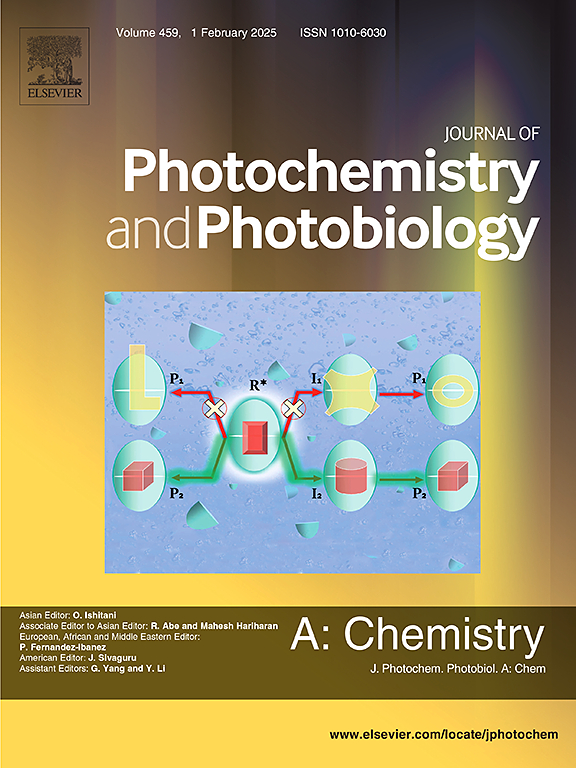Effect of halogenation on the photophysics of salicylideneimine-boron compound: An unusual behaviour with bromination
IF 4.1
3区 化学
Q2 CHEMISTRY, PHYSICAL
Journal of Photochemistry and Photobiology A-chemistry
Pub Date : 2025-02-28
DOI:10.1016/j.jphotochem.2025.116361
引用次数: 0
Abstract
Understanding and controlling intersystem crossing (ISC) is crucial to generate triplet states, which have diverse applications across various fields. A commonly employed strategy to enhance ISC involves the incorporation of heavy atoms within the molecule. However, the introduction of heavy atoms, such as halogens, not only influences the ISC process but also alters the overall photophysical properties of the molecule. In this study, we investigated the photophysics of an organoboron compound (SB) with a donor–acceptor–BF2 (D–A–BF2) framework, and explored how halogenation modulates its excited-state dynamics. While organoboron compounds are generally known for their strong luminescence, our parent SB compound exhibited remarkably low fluorescence quantum yield and lifetime. Halogenation with heavy atoms, such as bromine and iodine, was expected to further quench fluorescence, as observed in the iodo derivative of SB (5ISB). Surprisingly, the bromo derivative (5BrSB) shows the opposite effect, with enhanced fluorescence quantum yield and lifetime. Our study suggests that the low fluorescence in the parent SB compound is probably due to the presence of a conical intersection (CI) between the S1 and S0 states, which facilitates the rapid non-radiative decay from the S1 state. The introduction of heavy atoms seems to hinder the structural relaxation process, limiting the molecule’s ability to achieve the geometry required to form the CI. Additionally, the heavy atom effect in 5BrSB is insufficient to substantially enhance spin–orbit coupling (SOC). As a result, an increased fluorescence observed in the bromo-substituted compound.

求助全文
约1分钟内获得全文
求助全文
来源期刊
CiteScore
7.90
自引率
7.00%
发文量
580
审稿时长
48 days
期刊介绍:
JPPA publishes the results of fundamental studies on all aspects of chemical phenomena induced by interactions between light and molecules/matter of all kinds.
All systems capable of being described at the molecular or integrated multimolecular level are appropriate for the journal. This includes all molecular chemical species as well as biomolecular, supramolecular, polymer and other macromolecular systems, as well as solid state photochemistry. In addition, the journal publishes studies of semiconductor and other photoactive organic and inorganic materials, photocatalysis (organic, inorganic, supramolecular and superconductor).
The scope includes condensed and gas phase photochemistry, as well as synchrotron radiation chemistry. A broad range of processes and techniques in photochemistry are covered such as light induced energy, electron and proton transfer; nonlinear photochemical behavior; mechanistic investigation of photochemical reactions and identification of the products of photochemical reactions; quantum yield determinations and measurements of rate constants for primary and secondary photochemical processes; steady-state and time-resolved emission, ultrafast spectroscopic methods, single molecule spectroscopy, time resolved X-ray diffraction, luminescence microscopy, and scattering spectroscopy applied to photochemistry. Papers in emerging and applied areas such as luminescent sensors, electroluminescence, solar energy conversion, atmospheric photochemistry, environmental remediation, and related photocatalytic chemistry are also welcome.

 求助内容:
求助内容: 应助结果提醒方式:
应助结果提醒方式:


